This is Part 1 of a two-part article.
In response to the COVID-19 pandemic, companies, organizations, and individuals have sought to address supply chain gaps for needed medical equipment, spare parts and products, including ventilator tube splitters, nasopharyngeal swabs, and face shields. In the U.S., the National Institutes of Health has created a 3D print exchange to facilitate distributed (unlicensed third-party) production, but has not generally approved the use of such products. The Food and Drug Administration has adopted an emergency use authorization that waives manufacturing and labeling requirements for only some protective equipment and medical devices. And a declaration under the 2005 Public Readiness and Emergency Preparedness (PREP) Act has provided liability waivers for some producers and users, while a provision of the 2020 Families First Coronavirus Response Act extended that protection.
These actions to encourage third-party production, distribution, and use of replacement parts and entire medical devices during a pandemic shed renewed light on the need to adopt a more robust legal right to repair needed products and to produce them in emergencies. In the past, outside of the context of a public health crisis, I discussed the need to adopt legislation to create a narrow exemption from design patent liability to assure a competitive supply of automobile repair parts. The current pandemic makes a stronger case for the need to explicitly incorporate into our legal system a right to repair and produce products in emergencies.
Many medical devices, parts, and products are protected by patents or other intellectual property (IP) rights, such as copyrighted software. Unauthorized production and use of those parts and products may constitute infringement of those rights. As a result, there have been calls for voluntary pledging by IP owners not to assert their rights against third-party production and uses to address the pandemic (such as the Open COVID Pledge) and for governments to exercise inherent compulsory licensing authorities. The current public health crisis makes clear the need for explicit legal rights to repair and supply needed medical products, given the problems with inadequate supplies and supply chains and the inability to adequately scale up licensed production in an emergency.
Under longstanding U.S. patent law precedent, products purchased in the marketplace normally may be repaired – but may not be fully reconstructed or newly made – using unpatented parts, without requiring authorization of the patentee (usually the original equipment manufacturer, or OEM). Further, a recent U.S. Supreme Court case held that under the “exhaustion” doctrine (where the first sale of a patented product exhausts the rights of the patent holder) patents cannot be used to prohibit purchasers from engaging in such repairs. As the Court stated, “[t]he business works because the [repair] shop can rest assured that, so long as those bringing in the cars own them, the shop is free to repair and resell those vehicles. That smooth flow of commerce would sputter if companies that make the thousands of parts that go into a vehicle could keep their patent rights after the first sale.” Although the Court focused on the need to keep third-party automobile repair service providers free from patent rights, the point is even more cogent for the direct purchasers of needed medical equipment, such as hospitals or health departments.
Nevertheless, the Supreme Court left open the possibility of OEMs enforcing no-repair prohibitions contractually against direct purchasers of medical products. Further, the Court did not address the need for third parties to produce repair parts, when OEM parts are not readily available or are provided only at excessive prices. if the parts themselves are separately patented, unlicensed, third-party production could be prohibited. Recent “ecodesign” regulations relating to consumer appliances from the European Union require OEMs to assure that different kinds of repair parts are available to third-party service providers for at least seven or ten years, as well as to assure access to repair and maintenance information. But even then, the requirements are limited to OEM-provided parts and only for specific time frames. A similar approach for needed medical equipment thus would be inadequate whenever OEM supplies of patented repair parts prove insufficient or unaffordable.
As noted above, many legislative measures have been adopted to restrict tort liability so as to promote third-party production of needed medical products and repair parts for them during this pandemic. The PREP Act provides broad immunity from federal and state law claims for “covered countermeasures” within the scope of the Health and Human Services Department’s declaration, while protecting the public against intentional malfeasance. PREP Act immunity from liability for production and use also may extend to intellectual property claims, such as patent infringement. Additional state-law liability protections that would apply to production and use are being adopted in the form of “good Samaritan” laws. But these liability protections typically arrive well after the need for supplies has been recognized and often have uncertain application.
The ability to make legitimate repairs to needed products and to produce additional products to address public health emergencies should not have to depend on the voluntary choices of specific IP owners to donate their IP rights for public benefit. Nor should it have to await either binding public commitments by IP owners, as under the Open-COVID Pledge, or government agency declarations and clarifications providing liability protections, as under the PREP Act. Given the inevitability of supply shortages in medical emergencies, we need to assure in advance the ability to make repairs and to expand needed medical part and product supplies through unlicensed third-party production. We also need to preempt contractual restrictions that would prohibit making such repairs. Such legislative measures are critical to improving our emergency preparedness framework.
In Part 2, I discuss how legislative measures to assure the right to repair are fully consistent with the World Trade Organization’s Agreement on Trade-Related Aspects of Intellectual Property Rights (TRIPS Agreement). In contrast, legislative pre-authorization of third-party production of patented parts or products in emergencies is more questionable, and could potentially require amending the TRIPS Agreement.



